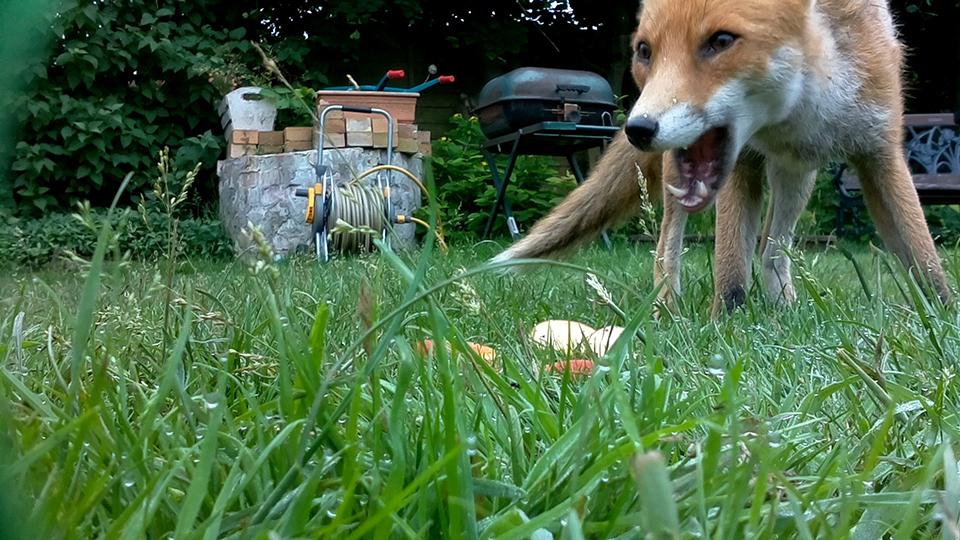The week of February 8th-13th is fox week. Here at Skedaddle Humane Wildlife Control, we are getting more and more fox calls, especially from Hamilton and Montreal residents.
We usually experience the highest volume of calls from homeowners concerned about foxes in January, which is their mating season. It is also the peak dispersal season. Cubs that were born last year, now adults, will be seen as a threat to the breeding rights and the available food supply of their parents. Any sub-adults who have failed to disperse will usually be chased away. Many of the sub-adults will actually leave of their own accord in search of a territory and a mate of their own. During this time, foxes will look for a safe, quite place to build a den and raise their young. Foxes can fit into a 4 by 4 inch hole, so areas like decks, shed or garages are ideal.
As long as your house has had proper prevention work to keep foxes from making a home, there is no reason humans and foxes can’t coexist together peacefully.
Fox Facts:
1: A group of foxes is called a skulk or leash
2: Foxes have whiskers on their legs and face, which help them to navigate
3: A male is called a ‘dog fox’ while a female is called a ‘vixen’
4: Foxes are generally solitary animals; unlike wolves, they hunt on their own rather than in packs
5: Foxes dig underground dens where they take care of their kits and hide from predators
6: Foxes have excellent hearing. Red foxes can reportedly hear a watch ticking 40 yards away!
7: Foxes are the only type of dog capable of retracting their claws like cats do. Foxes also have vertical pupils that look more like those of cats than the rounded pupils that other dogs have.
8: There are many different types of foxes, and they are the most widespread species of wild dog in the world. Foxes live just about everywhere – in the countryside, cities, forests, mountains and grasslands. Arctic foxes live in cold climates far north, and fennec foxes live in the North African desert.
9: When fox pups are born, they are unable to see, hear or walk, and their mother must take good care of them. When the pups are young, their father hunts and brings food back for the family.
10: Foxes reproduce once a year. Peak of the mating season is in January. During that time, foxes produce screeching sounds that can be heard during the night and in the early hours. Pregnancy lasts 53 days. Litters range from one to 11 pups (the average is six), which are born blind and don’t open their eyes until nine days after birth
11: Foxes eat just about anything, including berries, worms, spiders and small animals such as mice and birds. If they live in the city, they eat rubbish that people leave out. If they have extra food, they hide it in a small hole and eat it later when they are hungry.
12: Foxes have a lot in common with cats- Like the cat, the fox is most active after the sun goes down. In fact, it has vertically oriented pupils that allow it to see in dim light. It even hunts in a similar manner to a cat, by stalking and pouncing on its prey.
13: Foxes use 28 different types of calls to communicate with each other
14: A fox can run 30 miles per hour
15: Fox live up to 3 years in the wild and up to 10 years in captivity.




